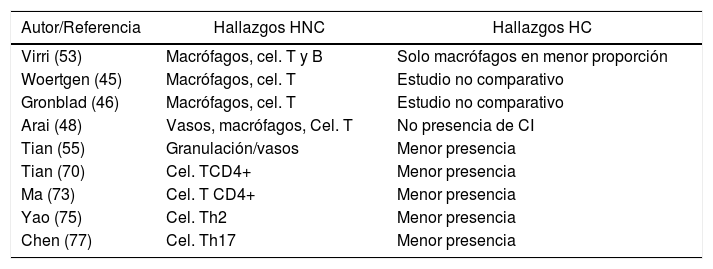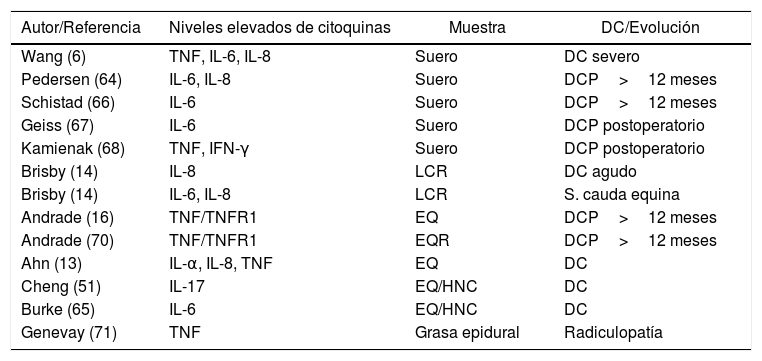Hasta no hace muchos años, se consideró que el dolor ciático, en la hernia del disco intervertebral lumbar, estaba originado por la compresión sobre la raíz nerviosa. Sin embargo, la hernia del disco intervertebral lumbar presenta cuadros muy heterogéneos inexplicables con el simple compromiso mecánico. En los últimos años, numerosos estudios de inmuhistoquímica y de biología molecular han demostrado que el tejido herniado no es un material inerte sino, por el contrario, biológicamente muy activo con capacidad de expresar una serie de mediadores de inflamación entre los que destacan citoquinas proinflamatorias como la interleuquina1, interleuquina 6, interleuquina 8 y el factor de necrosis tumoral. La inflamación parece estar no solo inducida por la irritación química de las sustancias bioactivas liberadas por el núcleo pulposo, sino también mediante una respuesta autoinmune contra el mismo. Por tanto, además del factor mecánico, la mediación bioquímica tiene un papel importante en la fisiopatología del dolor ciático y de la radiculopatía. A través de una extensa revisión sistemática de la literatura se han investigado los mediadores celulares y moleculares que intervienen en dicho proceso inflamatorio alrededor de la hernia del disco intervertebral lumbar y su implicación en el dolor ciático.
Up until fairly recently, it was thought that sciatic pain in the lumbar herniated disc was caused by compression on the nerve root. However, the lumbar herniated disc shows mixed pictures which are difficult to explain by simple mechanical compromise. In recent years various immunology, immunohistochemistry and molecular biology studies have shown that the herniated tissue is not an inert material, but rather it Is biologically very active with the capability of expressing a series of inflammatory mediators: cytokines such as interleukin-1, interleukin-6, interleuquin-8 and tumor necrosis factor being the ones which stand out. The inflammation is not only induced by the chemical irritation of the bioactive substances released by the nucleus pulposus but also by an autoimmune response against itself. Thus, in addition to the mechanical factor, the biomechanical mediation plays an important role in the pathophysiology of sciatic pain and of radiculopathy. Through a review of a wide range of literature, we researched the cellular molecular mediators involved in this inflammatory process around the lumbar herniated disc and its involvement in sciatic pain.
Artículo

Si es la primera vez que accede a la web puede obtener sus claves de acceso poniéndose en contacto con Elsevier España en suscripciones@elsevier.com o a través de su teléfono de Atención al Cliente 902 88 87 40 si llama desde territorio español o del +34 932 418 800 (de 9 a 18h., GMT + 1) si lo hace desde el extranjero.
Si ya tiene sus datos de acceso, clique aquí.
Si olvidó su clave de acceso puede recuperarla clicando aquí y seleccionando la opción "He olvidado mi contraseña".














